
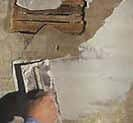
Do's: The only problem is "smoothness" of the wall and joint marks between the shutters. Holes in a line across the vertical walls. Or a thin layer of oil coating on the surface. Therefore it is advised to sand the surface with an instrument like a disc sander. This will solve the problems of oil layer and will mask the surface roughness. Before doing this all holes must be sealed with Home Shield Latex Plus Or Advanced Latex Plus and cement in the ratio of Latex Plus: Cement: 1:3 & Advanced Latex Plus: Water: Cement: 1:3:10. Both cases sand as required.
Painting System: For Interior walls (after grinding is over) apply 1 coat of primer with proper dilution and allow it to dry completely. Then apply 2 coats of Happy wall Acrylic Putty giving overnight interval between the coats. After drying sand the putty lightly with sandpaper no. 100/120. Then apply another coat of primer with proper dilution as above and allow it to dry completely. After that apply 2 to 3 coats of finish duly strained through fine cloth and 4 to 6 hrs interval between the coats. For Exterior walls (after grinding is over) Texture finish can be done the way we do to new walls. For smooth finish, apply 2 coats Bison Exterior Putty followed by 1 coat WeatherCoat Exterior Primer, followed by 2 coats of Exterior Emulsion. lf fund permits, you can apply 1 coat of Advanced Latex Plus, Water & cement in the ratio of 1:4:7 before primer. This is a waterproofing coating for protecting from –ve water pressure. In case of a texture application, you can apply exterior texture coating followed by 2 coats of top coat exterior emulsion like WeatherCoat Smooth / WeatherCoat All Guard / Walmasta.
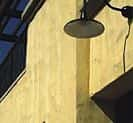
Do's: Lime is basically a chalky substance. On surfaces like this no paint can grip. Therefore lime has to be removed completely by wire brushing, sand papering, etc. Lime is alkaline in nature, therefore after removal the surface has to be checked by pH paper. In such cases the pH value must be below 11. Therefore, 100% lime removal and checking pH value is must.
Painting System: For Interior and Exterior application see 'Brick work'.
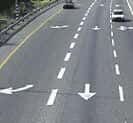
Do's: It is used on asphalt and or concrete surfaces. It requires high abrasion-resistant paint which can withstand constant tyre impact and pressure.
Painting System: For Highway use Guideline Road Marking Paint. For Runway use Guideline Runway Marking Paint. A water based luminescent highway or roadway paint composition that contains a fine powdered luminescent substance.

Do's: Hardwood is wood from angiosperm trees. It comes from precious trees like Saguan/Teak, Walnut, Mahogany, Oak, Rosewood, etc. These woods are used for making wooden furniture. The speciality is the beautiful wood grains. Furniture of this kind is painted with transparent coatings like spirit polish, Melamine, Polyurethane coating or Polyester coating. For this the wooden surfaces need to be sanded to make it even and smooth. This requires manpower and time.
Painting System: For Interior apply Single Pack PU on Spirit polish. Then apply Melamine 2 Pack Finish. Then 100% PU 2 Pack interior quality and then 3 Pack Polyester Coating. For Exterior apply 100% PU 2 Pack exterior quality.
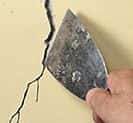
Do's: These are very fine cracks appearing on bare surfaces or on previously painted surface. When the surface is painted the cracks will often still be visible. Secondly, there will be cracks on dissimilar surfaces. There are many reasons behind these cracking. The main reason is difference in coefficient of expansion of different surfaces. If the cracks are visible on the beams and pillars, it is on architectural problem. It can be repaired by Cement modified mortar using Home Shield Latex Plus Or Advanced Latex Plus and cement in the ratio of Latex Plus: Cement: 1:3 & Advanced Latex Plus: Water: Cement: 1:3:10.
On walls where cracks are visible within 5mm of widh & depth, cut the same in "V" shape by. Clean the portion thoroughly. Apply Home Shield Crackfill Paste OR Crackfill Powder with putty knife. Paste is ready to use. Powder is to be mixed with water in the ratio of Crackfill Powder: Water: 2.5:1. Apply two coats at an interval of 24hrs. Leave it for curing for minimum 4-5 days.
Painting System: For Interior and Exterior application see 'Brick work'.
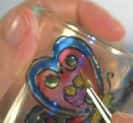
Do's: It is manufactured with silica, soda, lime and potash. Generally it is a smooth, transparent, translucent, non-absorbent, non-porous and brittle. For application of paint it needs to be cleaned with MTO/N.C. Thinner followed by 2 washings with soap water, so that there are no foreign materials like grease, dust, oil, etc. Rinse it twice with clean water and dry completely.
Painting System: For Glass apply 3 coats of Luxol High Gloss. For Sheen apply 3 coats of Luxol Satin or Luxol Lustre Enamel. For matt apply 2-3 coats of Silk or Rangoli Easy Clean or Rangoli Fashion Finish or Bison Emulsion as per your choice.

Do's: Oil storage tanks are subject to oil spillage and/or, contamination of oil on exterior surfaces and therefore no special paints are required. It can be done with aluminium finish or durable enamel gloss finish. It is advised to paint with aluminium paint which will minimise heat absorption or you can use Luxol High Gloss S/w.
Painting System: For Interior surface sandblasting is required to a std - Sa2 / Sa2.5 followed by 1 coat of Epilux 610 Primer + I coat of Epilux 4 H/B MIO + 2 coats of Epilux 4 HB Enamel or Epilux 4 Enamel. For Exterior sand the surface with Water Paper no. 150/180 and wipe clean with MTO/NC Thinner and ensure all rusts are removed and free from oily/greasy substance. Apply 1 or 2 coats of Redoxide Zinc Chromote Primer IS-2074 or Butterfly A/C Metal Primer followed by 2 coats of Tinted IS-2339 or Tinted Salvaline Alum.
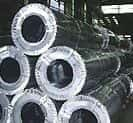
Do's: G.I.Sheet is a zinc coating on MS plate/pipe by a hot dip electrolyte process. The main problem here is gripping and adhesion for paint film. Surface preparation - Remove all oil, grease and contaminants by washing with MTO. Then wash again with 10% liquid soap solution. Rinse thoroughly with clean soft water. If the G.I. surface is found to be weathered, rub the surface with wire brush or Water Paper no. 150. Ensure there is absolutely no rust. Wipe the surface clean with a dry cloth and ensure the surface is completely dry.
Painting System: After cleaning the surface apply 1 coat of Bison or wash primer. Allow it to dry and apply 1 coat of Luxol Zinc Chrome Primer. If funds permit apply 1 coat of Redoxide Zinc Chrome Primer followed by 2 coats of Luxol High Gloss (any shade) or Salvaline Aluminium Paint.
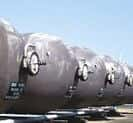
Do's: Often called a Gas storage tank or Gasometer's. There is a plunger in this type of tank. When the gas increases in the tank it goes up and when the gas leaves the tank it goes down. As a result friction takes place between the plunger and the wall of the tank. Therefore, such paint should be used which can withstand the friction. These tanks are often prone to chemical attack. Surface sanding and cleaning is very important. It must be cleaned with zero rust inside the tank, which may require sand blast cleaning.
Painting System: For inside use 2 coats Antisaline Metallic Primer followed by 2-3 coats of High Build Black. Give 4-5 days time for solvents to evaporate. To store petrol apply 2 coats of Epilux 610 Primer followed by 2 coats of Epilux 4 H/B Enamel without dilution. For outside use 2 coats of Redoxide Zinc Chromate Primer (IS-2074) or Butterfly A/C Metal Primer followed by 2 coats of Luxol High Gloss Enamel.
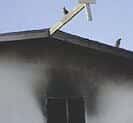
Do's: This refers to surfaces affected by smoke, heat, oil or any water soluble matter. As a result of which paint coatings get burnt and blistered. The affected paint film must be completely removed and the surface has to be given absolutely new face lift.
Painting System: Sand the surface with Water Paper no. 150/220 to remove all affected old paint film, loose materials, dust, etc. Then wash with soap water(10%) to remove all oiliness as much as possible and rinse with clean soft water. For interior apply 1 or 2 coats of Illusion Sealer followed by 1coat of 077 Primer. Give 4 to 6 hrs. drying time for the surface to dry completely. Apply 2 coats of Happy Wall Putty giving overnight interval between the coats. Sand it with Water Paper no. 280/320 to get smooth and even surface. Apply 1or 2 coats of 073 Primer and allow it to dry completely. On top of that apply 2/3 coats of Silk or Rangoli Easy Clean or Rangoli Fashion Finish or Bison Emulsion as per your choice and budget. For exterior apply 1 or 2 coats of Illusion Sealer followed by 1 coat of WeatherCoat Exterior Primer. Give 4 to 6 hrs gap between the coats. Apply 2 coats of WeatherCoat Smooth or WeatherCoat All Guard or WeatherCoat Longlife whichever is approved. For a smooth surface apply 2 coats of Bison Exterior Putty after Illusion Sealer coat. The balance application to be followed is as given above.
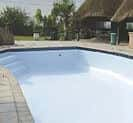
Do's: Glass is melted and drawn out into fine fibres and woven into a tough, light, strong material. Then a combination of fiberglass and Polyester resin is moulded into various shapes.
Painting System: Apply 1 coat of Epilux 4 Clear Varnish. Then apply 1 or 2 coats of Epilux Putty. Allow it to dry fully. Give a gap of 2/3 days time before finishing the coating. Apply 2 coats of Berger Thane PU Enamel or Epilux 4 Enamel.
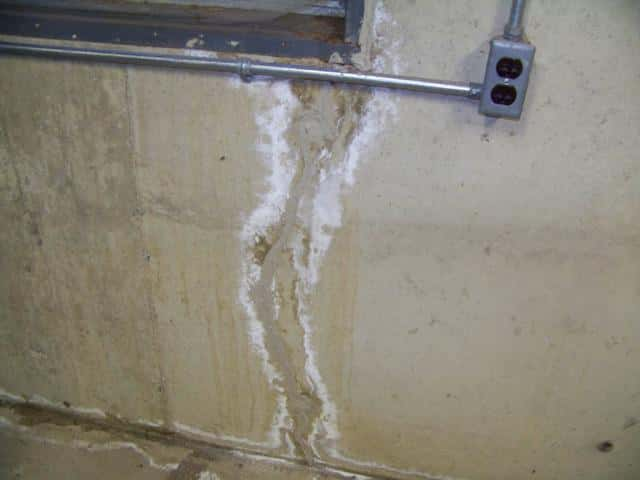
Do's: This occurs due to evaporation of water from the solution of soluble salts which rise to the surface. It happens as white fluffy deposits or white spots around the wall. All affected areas should be washed using wire or coir brush till plaster with 10% phosphoric acid (P2S04) solution. Allow the surface to dry completely. Wash again with clean water and dry.
Painting System: For interior/exterior walls apply 2 coats of Home Shield Dampshield 2K as putty in the affected area first on an interval of 4-5 hrs. Mixing ratio Dampshield 2K Base: Catalyst: Cement: 1:1:2 by volume. This will kill the pores in the plaster. Then apply 2coats of Home Shield Dampshield 2K as primer over putty applied surface on an interval of 2-3 hrs. Mixing ratio Dampshield 2K Base: Catalyst: Water: 1:1:1. Now apply Happy Wall Putty 2 coats for smooth finish. Then apply 1 coat 073 Primer (Berger Cement Primer Solvent Thinnable). After this apply on top coat as per your choice. For exterior walls apply 1 coat of WeatherCoat Exterior Primer. To get best result apply 2 coats of 775 primer followed by 2 coats of WeatherCoat All Guard or 2 coats of WeatherCoat Longlife.
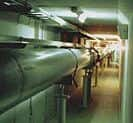
Do's: It is an enclosed tube either of circular type or box type used for carrying liquid or gaseous matter. Generally it is used to carry hot air throughout a building's heating system for ventilation or for air conditioning or for carrying fumes from manufacturing processes. Often it is made of G.I. sheet and it is left unpainted inside. In most cases water leakage happens due to improper painting system.
Painting System: For G.I. sheet apply 1 coat of wash primer followed by 1 coat of Luxol Zinc Chrome Primer. After drying, on joints apply Luxol Knifing Putty thoroughly and dry it completely. Then apply 2 coats of LHG or 2 coats of Bitolin A/A Heat resistant Black. Ensure joints and holes are properly covered.
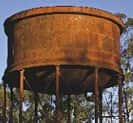
Do's: Water tanks are liquid storage containers. Generally this is made of concrete, MS sheet, PVC tank etc. Over a period of time, water reacts with surfaces, as on metal it develops rust, on concrete it develops fungus growth and algae, etc. This results in contamination, which is unhygienic. In case of metal tank, if it continues for a longer time, the tank might have to be replaced due to corrosion, which is expensive. In case of a concrete tank it might lead to severe dampness on the tank and so affect the main building. In most cases it is seen.
Painting System: For interior (MS metal) no primer is required. Apply 3 coats of Berger Asphaltene Black. It is important to remember that, while painting the tank from inside the cover must be kept open till all 3 coats are applied. Give 24 hrs between 1st and 2nd coat and 2nd and 3rd coat. Keep the tank open (or another 3 to 4 days to harden the paint film. After this only, should water be filled. Even after that water should be rinsed out twice or thrice to avoid smell, if any.
For concrete water tanks first remove the fungus with wire brushing. Wash the water tank thoroughly. Apply 2 coats of Home Shield Latex Shield 2K on an interval of 6 hrs. Before filling water let it cure for 7 days. Rinse twice before finally filling the water.
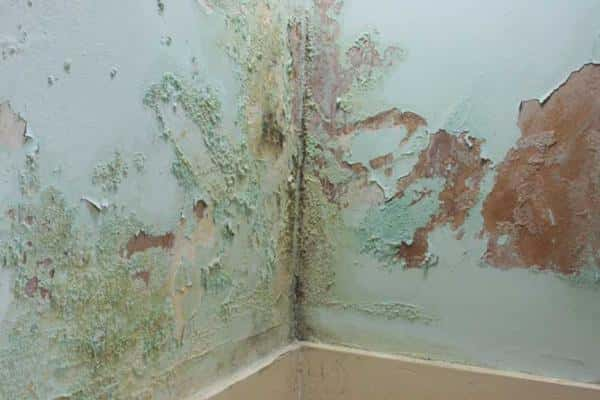
Do's: Penetrating dampness is the most common form of dampness in building. The presence of moisture on the walls or ceiling is seen in many ways. These are hair line cracks, leakage from concealed pipes, cracks in rain water pipes, waterlogging on the parapet or on the roof, from the sub-soil, water the sub-soil, water penetration from structural defects, condensation or poor ventilation, deliquescent salts due to poor quality bricks and faulty sand quality etc.
Painting System: All affected areas should be washed using wire or coir brush till plaster with 10% phosphoric acid (P2S04) solution. Allow the surface to dry completely. Wash again with clean water and dry.
Walls which are affected by damp results to dry flaking pealing etc, apply 2coats of Home Shield Dampshield 2K as primer on plastered surface on an interval of 2-3 hrs. Mixing ratio Dampshield 2K Base: Catalyst: Water: 1:1:1. For highly affected walls with wet patches & fungus, apply 2 coats of Home Shield Dampshield 2K as putty in the affected area first on an interval of 4-5 hrs. Mixing ratio Dampshield 2K Base: Catalyst: Cement: 1:1:2 by volume. Then apply 2coats of Home Shield Dampshield 2K as primer over putty applied surface on an interval of 2-3 hrs. Mixing ratio Dampshield 2K Base: Catalyst: Water: 1:1:1.
Now for Interior use one coat Berger Cement Primer (wT) + 2 coats Happy wall putty + 1 coat Berger Cement Primer (ST) + 2 to 3 coats of Breathe Easy or Silk or Rangoli Easy Clean or Rangoli Fashion Finish or Bison Super Emulsion or Bison Super Acrylic Distemper as per approved cost. For Exterior use one coat WeatherCoat exterior primer (775) + 2 coats of WeatherCoat All Guard or WeatherCoat Smooth or WeatherCoat Longlife or Walmasta.
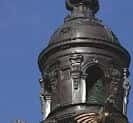
Do's: Priming should not be applied directly on the metal. Sand the surface to remove all oxides of copper, dust. Clean it with solvent to remove any oiliness.
Painting System: Racks & Equipment - For gloss finish apply 1 coat of Bison Wash Primer followed by 2 coats of Luxol High Gloss. Colour according to one's choice. For transparent finish apply 1coat of Bison Wash Primer followed by 2 coats of Luxol Clear or 074.

Do's: Low temperature always prevails when cold storage is in operation. Therefore the temperature need to be normal before painting. It should be well ventilated. Cold storage is advised after 3 to 4 days of painting to clear all VOC's and solvent smell if any.
Painting System: On interior walls apply 1 coat of Self Priming Linosol Chloro Rubber Paint followed by 2 more coats without any dilution. On metal surfaces use 1 coat of Linosol Chloro Rubber as base coat followed by 2 coats of Luxol HG colour as per customer's choice.

Do's: Exterior areas are likely to be affected by salt deposits. Such deposits can be found several miles inland from the sea coast. In such conditions UV rays will accelerate the erosion of paint coatings and will lead to severe chalking and flaking of paint film. In such conditions thorough washing of the surfaces is essential. Pure Chlorinated Rubber paint should be used on all such surfaces. However currently in India exterior emulsions, gloss enamels, etc. are often used. Avoid using dark colours in these areas as they absorb the sun's rays keeping in the heat. Regional climate and light conditions may also influence your colour selections. The warm regions of the country, people often use vibrant colours while in more temperate climates those colours would look harsh and out of place.
Painting System: On metal surface use 2 coats of Linosol Chloro Rubber Paint over a coat of Linosol Chloro Rubber Self Priming or 3 coats of Luxol High Gloss over a coat of Luxol Zinc Chromate Primer. On wooden surface use 2 coats of Linosol Chloro Rubber Paint over a coat of Linosol Chloro Rubber Self Priming. On plastered surface 1 coat of Tartaruga would be the best option. If not, then use 1 coat of Illusion Sealer + 2 coots of WeatherCoat Exterior Primer (775) + 2 to 3 coats of WeatherCoat All Guard or WeatherCoat Longlife or WeatherCoat Smooth. Economic quality should not be used as top coat.
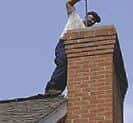
Do's: Chimneys must withstand corrosive compounds, extremes of temperature and repeated heating and cooling cycles. The chimney needs heat to stay clean and free from corrosive moisture. Use wire brush to remove loose particles. Surface cleaning is very important. In this case removal of all old paint coatings is must. No priming is required.
Painting System: Up to 250°C dry heat use 2 coats of Ferrotol HR aluminium or, Ferrotol Stack black. Above 250°C dry heat use 2 thin coats of Lumerous HR - 43. Above 400°C dry heat use 2 thin coats of Lumerous HR-143. This will withstand heat up to 600°C. There is no paint available beyond 600°C dry heat.

Do's: Usually tiles & joints between tiles are filled with white cement in both vertical and horizontal and on floors. However this treatment does not last for long. Over time there will be water seepage and subsequently the other inside walls will be damaged. Fix horizontal & vertical tile with Home Shield Tile Adhesive & for tile on tile use Home Shield Tile Adhesive Plus. For joints use Home Shield Tile Grout for vertical & Horizontal both. After that clean the surface with 10% Muratic acid solution and wipe clean.
Painting System: Apply 2 to 3 coats of Epilux 4 Enamel or Berger Thane PU Enamel. The colour can be as per your choice.
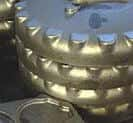
Do's: The waste from pig iron. It is generally rough, hard, brittle non malleable iron-carbon alloy, cast into shapes containing 2 to 4.5 percent carbon, 0.5 to 3 percent silicon and lesser amounts of sulphur, manganese and phosphorus.
Painting System: Use Butterfly A/C Metal Primer. Allow it to dry completely. To obtain smooth surface apply 2 coats of Luxol Knifing Putty and allow it to dry. Then apply 1 coat of Speed Coat Primer Surfacer followed by 2 coats of Luxol High Gloss.
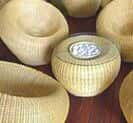
Do's: This is special type of and highly flexible wood. Made into woven furniture. While painting we must keep in mind that the cane wood must be fully dried. Any paint, which contains dye as a pigment may bleed. Therefore on this type of wood we must use hard drying paints like Gloss Enamels, 2 Pack Melamine (for interior) or 2 Pack PU system.
Painting System: Sand the surface with sand paper or water paper thoroughly and wipe clean. For Transparent finishes use Luxol Clear Varnish, Woodkeeper PU Single Pack, 2 Pack PU, 2 Pack Melamine. For Colour finish use 1 coat PWP followed by 2 coats of Luxol High Gloss.
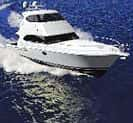
Do's: These are made of combinations of wood, metal, fibreglass. These need to withstand high degree of abrasion, and be water resistant specially saline water. It can be divided into two segments. Continuously under water one part and the other above the water level. Painting specifications will be according to the sitting of the boat/trawler.
Painting System: Sections underwater should be cleaned properly because it is under the attack from marine organisms. Apply 2 coats of Anti-Fouling Paints. On metal and wooden surfaces, which are under the water level, apply 3 coats of Berger High Build Black or Linosol Chloro Rubber Paint. On wooden and metal surfaces above the water level, apply 1 coat of Parrot Wood Primer followed by 2 coats of Luxol One Coat Enamel or 3 coats of Luxol High Gloss. In all fibreglass areas apply 1 coat of Epilux 4 Enamel followed by rubbing 2/3 coats of Linosol Chloro Rubber Paints with proper time given between the coats.
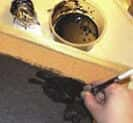
Do's: There are different types of boards available in the market. These are: Insulation boards, Soft fibre boards, Particle boards, Rigid mineral boards, to name a few.
Painting System: For non-wood particle boards use 1 coat Berger Cement Primer (ST). For wood particle boards use I or 2 coats of Parrot Wood Primer any shade. Finish with 2 coats of any Emulsion paint or 2 coats of Duroglaze Rich Matt Paint.
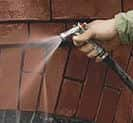
Do's: Scrape off all cement splashes and sand with a coir brush or sandpaper. Clean the brick wall with clean water and dry completely. Any fungus coated areas should be cleaned with water paper while wet. Then use Bio-wash solution and wash again with clean water. Allow it to dry completely.
Painting System: For interior wall apply 1 coat Illusion Sealer (max 10% dilution). Allow it to dry completely. Then apply 1 coat of Berger Cement Primer (WT) followed by 2 to 3 coats of Breathe Easy or Silk or Rangoli Easy Clean or Rangoli Fashion Finish. For exterior wall apply 1coat Illusion Sealer. Followed by 1 coat of Exterior Primer (775), then apply 2 coats of WeatherCoat All Guard or WeatherCoat Smooth or Walmasta.
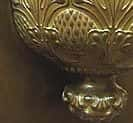
Do's: Brass is an alloy of copper and zinc. It can be also be in combinations of aluminium zinc tin with copper. This definitely is an improved quality. Mostly alloys are not painted but if required then it should be rubbed with fine water paper like 600, 800, 1000 nos. wet with MTO with low pressure. Clean the surface with MTO followed by wiping with a clean dry cloth.
Painting System: Apply 1coat Bison Wall Primer followed by 1 coat of Luxol Zinc Chromate Primer. After drying apply 2 coats of either Luxol High Gloss or a clear coat like Luxol Clear Varnish or WoodKeeper PU Single Pack.
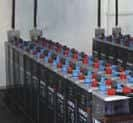
Do's: Batteries emit chemical fumes continuously. Therefore surface cleaning is very important. For old painted surfaces one should strip off all the old paint film and treat as new surface. Ensure best possible cleaning.
Painting System: On all metal wood and cement surfaces there will be 1+2 coats painting system. 1st coat will be a thinned version and the final 2 coats will be of the original material without any dilution. You can use either Epilux 4 Enamel or Linosol Chloro Rubber paint. After painting give day's time for service condition.
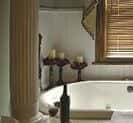
Do's: Generally these are made of either metal or fibreglass. Ceramic bath tubs are also available. They come in a wide variety of styles too.
Painting System: For maintenance purpose use 2-3 coats of Epilux 4 Enamel. 1st coat should be applied as self priming followed by 2 original coats. You can also use Berger Thane for this.
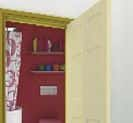
Do's: Due to continuous soap water spillage on the door there will be many dark spots. This needs to be cleaned. If required use water paper to cut the surface. Use 1 coat of Bio-wash solution. The next day wash with clean water. Periodical cleaning is important.
Painting System: Use Linosol Chloro Rubber Primer. Two coats will give better result. Apply 2 coats of Linosol Chloro Rubber Enamel or Luxol High Gloss Enamel.

Do's: Due to continuous water usage, attached opposite side wall has the risk of catching damp due to water absorption/seepage. Remove POP through wire brushing till plaster & clean with water thoroughly.
Painting System: Apply 2 coats of Home Shield Latex Shield 2K on an interval of 5-6 hrs. Leave it for 2-3 days for curing. Apply Berger Cement Primer (ST) followed by 2 coats of Luxol Satin or Luxol Luster Enamel with an overnight interval for the 2nd coat.
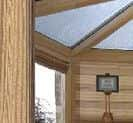
Do's: It is known as Scotch Pine. Rubber wood is also known as White soft wood. This type of wood is used for making furniture. It has grains in straight lines and a fine texture uniformly spread. Sand the surface with fine grade water paper like 220/280/320/400, etc. along the line of the grains. While rubbing, exert light pressure on the wood. Excessive pressure may spoil the grains.
Painting System: Use either White Melamine or 2 Pack PU or Becker's products. The painting procedure is already spelt out in the product literature.
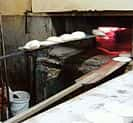
Do's: Clean the surface with mild soap, followed by 2% Dettol solution with water. Then dry the surface fully. After that you allow for sufficient time for the Dettol smell to clear.
Painting System: On concrete surface use Epilux 4 clear Lacquer, followed by Epilux 4 Putty 2 coats using putty knives to get a smooth surface. After that apply 2 to 3 coats of Epilux 4 Enamel. Allow 7/10 days after painting.

Do's: Basically all roads are made of Asphalt. Some times it is used on rooftops for stopping water leakage. This is soft material and melts in heat.
Painting System: For roads use either Parrot Road marking paint 2 coats, which is spirit base paint confirms to IS 164. Please note no primer is needed in this type of surfaces or, Guideline Road/Runway marking paint 2 coats. If it is used on rooftops, it will give good result but the roof will heat up. To counter apply 2 coats of Salvaline Aluminium paint on top of Asphalt applied to deflect heat.
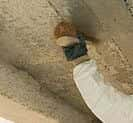
Do's: Check pH value of the surface. Clean the surface properly if required, then use Bio-wash with 5% dilution with clean and soft water. Next day wash the surface again with water. After drying fully you can go for painting.
Painting System: Use Berger Paints Cement Primer (ST) or (WT) 1/2 coats. For interior use top coat like Breathe Easy, Luxol Silk, Rangoli Easy Clean, Rangoli Fashion Finish, Bison Super Emulsion or Bison Super Acrylic Distemper or Bison Acrylic Distemper. For exterior use WeatherCoat All Guard, WeatherCoat Smooth or Walmasta. You can use Durocem Extra. For best result use Durocem Extra 1 coat as primer.
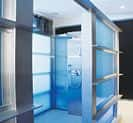
Do's: Keep away Acidic and Alkaline materials like - cement, lime, caustic soda, etc.
Painting System: Use Bison Wash Primer, One coat Luxol Zinc Chrome Primer or Redoxide Zinc Chromate Primer, Luxol High Gloss 2 to 3 coats.